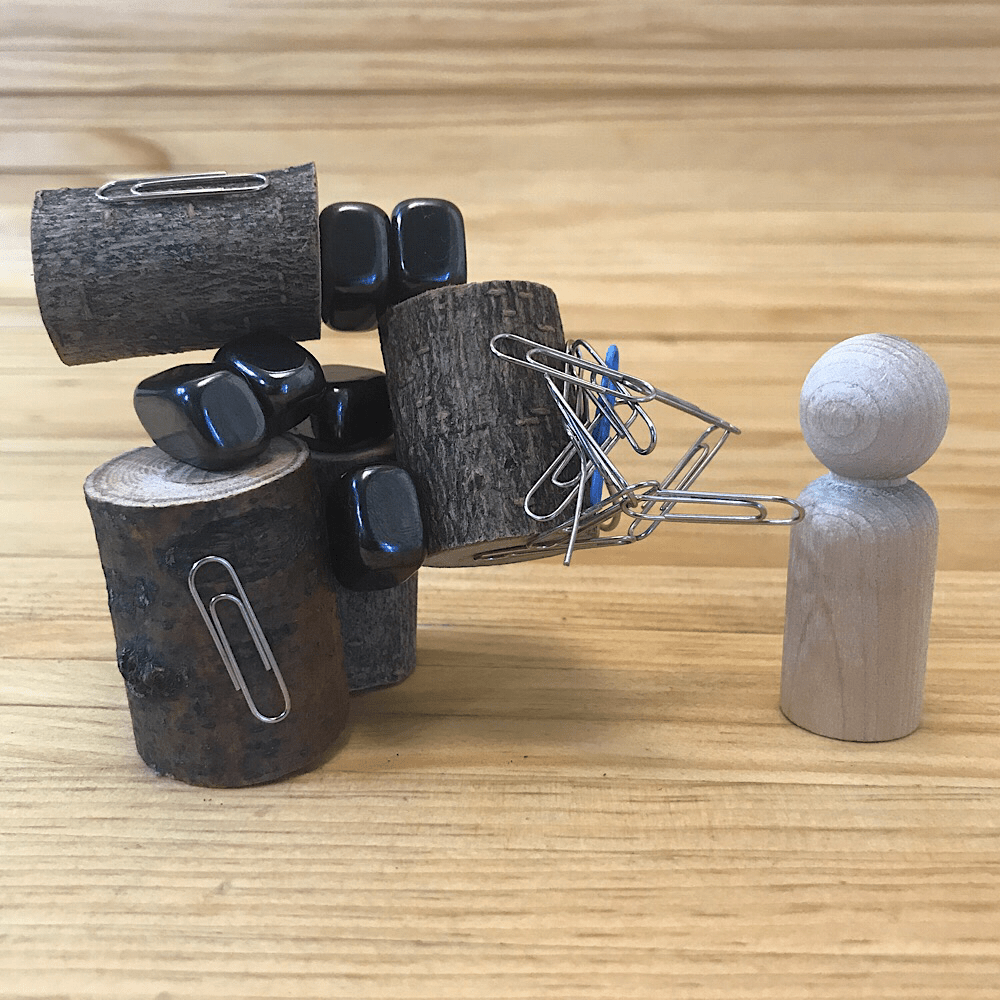
A week or so back, I posted this picture to our Playvolution HQ Facebook page:

The slices of wood with the paperclips stuck to them are called Branch Magnets Blocks. Each one has an embedded 1 inch long by 1/2 inch diameter magnet. I’ve probably made a few thousand of them over the last few years.
This exchange took place in the comments:
Commenter: “What a ridiculous way to confuse children.”
Me: “Thanks for the kind words, [name redacted]! Children who are “confused” by things like this tend to ask questions and seek information to un-confuse themselves. We humans have learned so much while seeking to un-confuse ourselves. Hurray for the Scientific Process!”
Commenter: “really?”
Me: “really.”
Playvolution HQ Facebook Page
I also shared an article entitled Pure Novelty Spurs The Brain.
I could have shared many more links that explain how our brains are stimulated by novelty.
For example, this one explains that, “Novel stimuli tend to activate the hippocampus more than familiar stimuli do, which is why the hippocampus serves as the brain’s “novelty detector”” and that, “novelty seems to promote memory”.
This one says, “the long stretches of confusion between moments of clarity should be seen as positive and necessary, not as intellectual bogs to slog through, but as undiscovered worlds and roads to explore and immerse ourselves in. It is contentment with our initial clarity, and not confusion, that leaves us stuck.”
And this one talks about the value of embracing confusion:
The difference between the people who successfully master challenging academic subjects and those who don’t is strikingly simple; they tackle challenging problems without necessarily knowing HOW they’re going to solve them, but are willing to wade through the confusion of not knowing. To many of us, confusion seems counterintuitive to the learning process and it stops us in our tracks. If you are confused, it’s because you don’t understand. If you don’t understand, then you have not learned. Confusion is like a great black pond we must wade through without knowing exactly how (or if) we’ll make it to the other side.
Embracing Confusion by Elizabeth Keller
As a teacher, you have the ability to get your students past these learning hurdles; you can set the bar high and push students to exceed their expectations. You can also show students that swimming through that murky black water of confusion is a very normal part of learning something new. Teach them not to fear confusion, but to embrace it.
All those silly hunks of wood I’ve embedded magnets in have probably confused thousands of children and adults over the years.
I love to see it happen: I hold one of the hunks over a pile of paperclips or steel washers and slowly lower it until the metal bits leap up and grab the hunk. Then the person watching tilts their head to the side and makes the same face as a curious and confused Labrador puppy.

Confusion is an invitation to ask questions, solve a problem, figure things out, gather information, seek knowledge. The scientific method exists as a tool for seeking answers to things that confuse us.
I love seeing the confused Labrador puppy face on kids because it tells me they’re thinking. This is one reason I am so in love with Loose Parts, they infuse play spaces with novelty and all the learning that follows.
And yet, some early learning settings seem to have no room for confusion. No time to help children struggle through the discomfort of not knowing and actively seek answers.
And once kids from such programs hit elementary school, where knowing for certain what the right answer is leads to good grades and not knowing means your dumb, the idea of intentionally seeking out confusion is terrifying. These children grow reluctant to ask questions or let their confusion show in any way, lest they be judged deficient. Better to stay quiet and muddle along keeping any questions, confusion, and curiosity inside.
How I love early learning settings and schools that embrace confusion, novelty, and curiosity! It’s not surprising that they also seem to be the programs that also embrace play. I’ve written about and linked to some of them here.
If only more programs would seek out ridiculous ways to confuse children!
Post Author
Jeff Johnson is an early learning trainer, podcaster, and author who founded Explorations Early Learning, Playvolution HQ, and Play Haven.

Leave a Reply